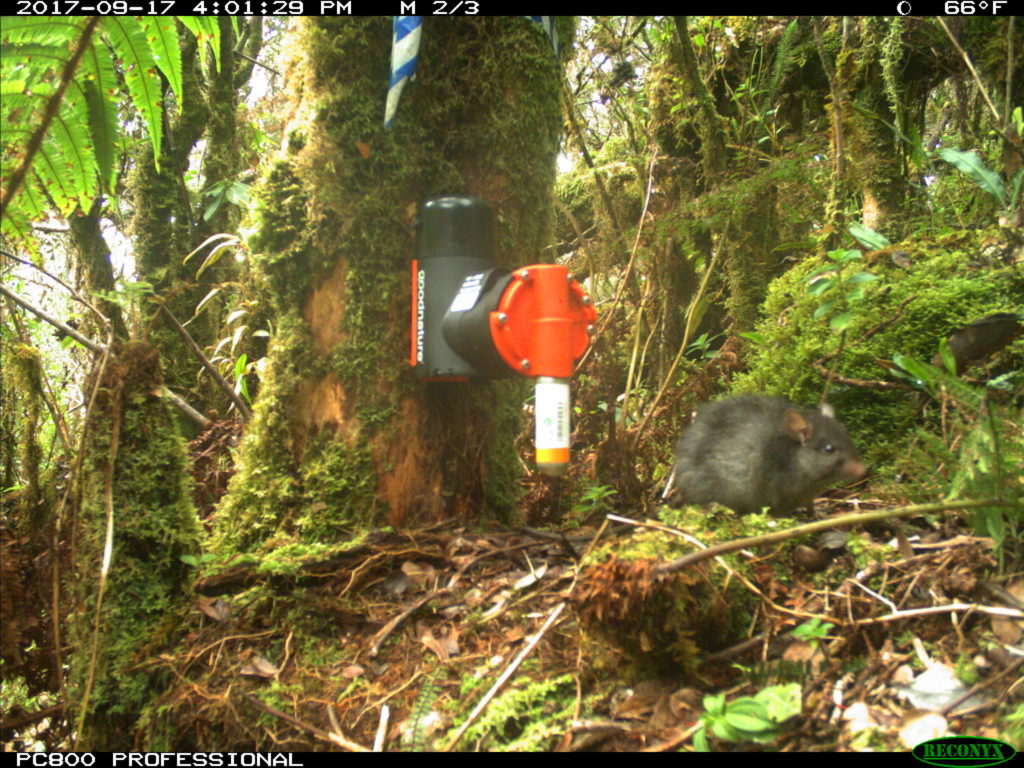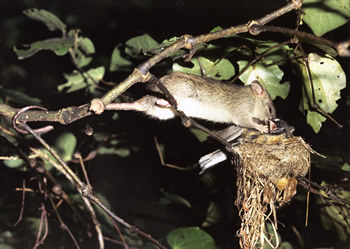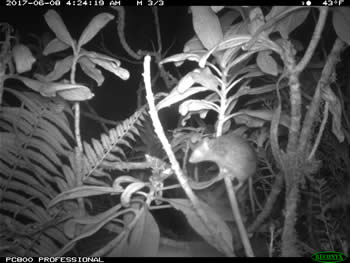Rats on Maui
Invasive predatorsRats
Three non-native species of rats have been introduced to Hawai’i. Polynesian rats (Rattus exulans) arrived with Hawaiians about 1600 years ago. Black rats (Rattus rattus) and Norway rats (Rattus norvegicus) arrived with Europeans. Besides being a pest around human habitation and a threat to human health (see Rat Lungworm), these species have a large impact on the native ecosystem as predators and competitors.
Rats are agile tree climbers and at least one of the three species is found in all native habitats. Rats are known to prey on eggs, nestlings, and adults of Hawai’i’s native forest birds. Additionally, they compete with forest birds for food items such as native snails, insects, fruits, and seeds. This also decreases plant recruitment and regeneration of the forest and can decrease populations of snails and insects.
As a result, rats play a significant role in the decline of Hawai’i’s endemic forest birds as well as overall forest health.
Effective predator control of these animals helps to decrease their impact on forest bird populations.



Save the Forest, Save the Birds
It takes a community of dedicated individuals and support to make conservation happen
